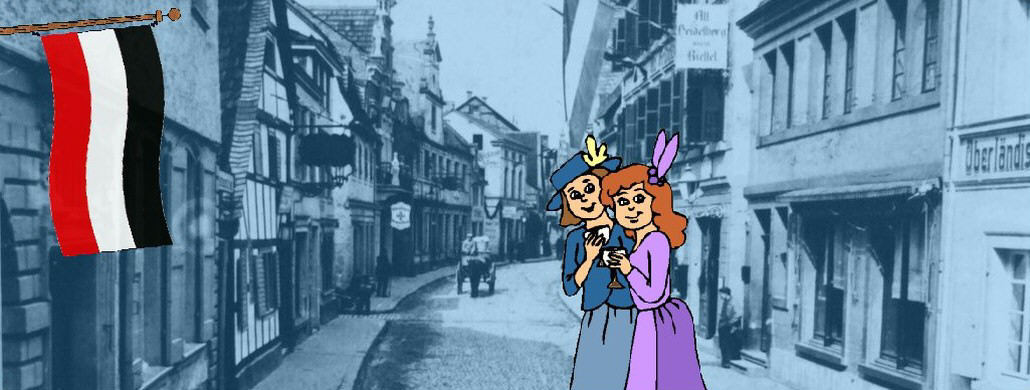
[Germany and America, around 1890] The year 1888 saw three Emperors: Wilhelm I died in March, and his son Friedrich III died 99 days later. So the young Kaiser Wilhelm II got on the throne.
A highly innovative time
After a long period of stagnation, things were finally going well in Germany. “I will lead you towards glorious times” the Kaiser said, and one would well believe it. Wilhelmine Germany was a modern industry state, a “High-Tech location” as we would say today. Meanwhile, Germany had become one of the world’s leading economic powers. Not only the iron and coal industry in the Ruhr area, in the Saarland and in Upper Silesia, but also chemistry, pharmacy, electrical engineering and optics contributed to the economic boom. These industries were relevant for the future, and many Nobel Prizes went to Germany. In Berlin and other big cities one could see motor cars, trams and electric light.
The authoritarian state
The Empire made big progress in the field of economy and industry and had colonies in Africa and Asia. At however, however, it remained utterly conservative. The parliament, the Reichstag, had gotten a pompous new building, but its standing was low. The Chancellor and his Government were responsible to the Emperor, not to the parliament. Wilhelm himself believed that he was Emperor by the grace of God. Next to the Emperor, the military had the highest standing. Serving as an officer was the best career option for a young nobleman, and having done so was highly recommendable for a career in a civilian profession as well. The Kaiser always wore uniform.
USA
Meanwhile, the USA had become the world’s leading economic power. In 1867, they had purchased Alaska from Russia, in 1882 the State of Washington had joined the United States. The whole territory from the East Coast to the West Coast now belonged to the US-Americans. The Native American Indians, however, had been killed in numerous wars or forced into reservations. On December 29, 1890, soldiers of the 7th US cavalry regiment killed men, women, and children of the Minneconjou-Lakota Sioux at Wounded Knee, in the Pine Ridge reservation in South Dakota. It crushed the last resistance against the Whites.
New York was a metropolis, skyscrapers towered into the sky. More and more people set out to find their luck in America. Between 1865 and 1890, over 10 million people, mainly from Northern and Western Europe, immigrated to the USA. But despite all economic boom and technological progress, there was much poverty and corruption, especially in the cities. Immigrants were now processed at Ellis Island, an island outside the city limits of New York, and immigration laws became more restrictive.
“Who does not honor the old fatherland is not worthy of the new.”
In 1893, the world exhibition took place in Chicago. On the occasion of the German Day, Carl Schurz had been asked for an address. The newspapers printed his “Greeting to the Old Fatherland”.
Lorenz, now white-haired as Schurz, sat in his high-backed chair on the front porch of the Merry Dragon Inn and read. This was true also for him and his family. He loved his new homeland, the United States, and he loved his old homeland. They read German authors as well as American, English and Irish ones. “Schurz says exactly what I feel,” he said to his wife Annelie. “Who does not honor the old mother is also unable to love the young bride.”*
He smiled and looked at his wife. Annelie was still as beautiful as she had been as a young bride, Annelie was still as pretty as ever, yet she had long since become a mother and grandmother. “We should go once again to the Rhine before we are too old,” he said with a big smile.
* Quoted from “Gruß ans alte Vaterland”, www.wikipedia.de

Be the first to comment